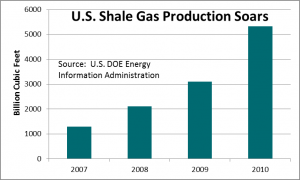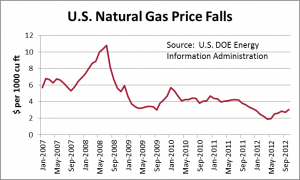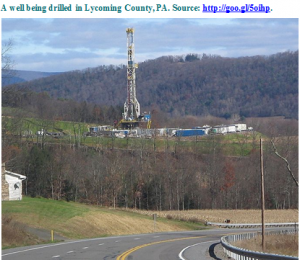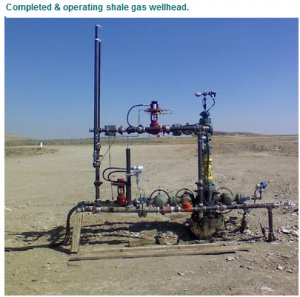 On Jan. 3, the Gannett News Service Albany Bureau reported on a draft environmental impact statement from 2012 on high-volume hydrofracking (http://goo.gl/F2bjy). The state Department of Environmental Conservation assessment concludes that “by implementing the proposed mitigation measures identified and required in this (report), the department expects that human chemical exposures during normal HVHF operations will be prevented or reduced below levels of significant health concern. Thus adverse impacts on human health are not expected from routine HVHF operations. When spills or accidents occur, the department has identified numerous additional mitigation measures … so that significant exposures to people and resources on which they rely are unlikely.”
On Jan. 3, the Gannett News Service Albany Bureau reported on a draft environmental impact statement from 2012 on high-volume hydrofracking (http://goo.gl/F2bjy). The state Department of Environmental Conservation assessment concludes that “by implementing the proposed mitigation measures identified and required in this (report), the department expects that human chemical exposures during normal HVHF operations will be prevented or reduced below levels of significant health concern. Thus adverse impacts on human health are not expected from routine HVHF operations. When spills or accidents occur, the department has identified numerous additional mitigation measures … so that significant exposures to people and resources on which they rely are unlikely.”
DEC officials told Gannett that these findings were preliminary and did not constitute “final DEC policy.” Fair enough-this is a draft.
Yet these findings are consistent with the text of a briefing paper on high-volume hydrofracking from the Environmental Defense Fund, which concludes: “In short, natural gas could be a win-win benefiting both the economy and the environment-if we do it the right way. The right way means putting tough rules and mandatory environmental safeguards in place that protect communities and reduce methane pollution.” See http://goo.gl/NbiUP.
After two decades of fracking in the Barnett Shale in Texas, many-including the EDF-conclude that the environmental risk is manageable. And we know that trading natural gas for coal is very good for the environment. As the EDF briefing paper states, “There is no question that domestic unconventional gas supplies are leading to coal-fired power plants being retired.”
Thus I believe that New York, after developing rigorous and enforceable regulations, should permit high-volume hydrofracking wherever the geology of the state makes it commercially viable. Yes, a finite number of water wells may be contaminated, but the very nature of the gas deposits (small pockets, thousands of feet below freshwater aquifers) makes widespread effects unlikely. The highly visible nature of the drilling process makes the activity much easier to regulate than, say, securities fraud or food safety.
That’s my opinion–and I don’t expect to convince anyone to change theirs in this brief column. Given the likely benefits and our ability to minimize risk, I find the extent and vigor of the opposition surprising. Why does public opinion in Texas, Pennsylvania and West Virginia embrace natural gas drilling while the opposition in New York is so vigorous?
Clearly, we disagree on the facts. From where I sit, opponents have unrealistic expectations about the alternatives to fossil fuels. With current technology, alternative energy is deeply subsidized. Barring a miraculous breakthrough, the cost gap with natural gas won’t be closed for many years, possibly decades.
 A related belief is that the cost differential imposed on consumers by a fracking ban would be modest, temporary and affordable. I recognize that many of fracking’s opponents would gladly pay twice as much as they do now to heat their homes, run their tablet computers and drive their cars. That’s a choice that the state’s less well-off residents would be unlikely to embrace, however. And the impact is broader than the direct cost of energy. The energy cost differential would find its way into the price of everything from food to manufactures. Moreover, a U.S. ban on high-volume hydrofracking would shift the balance of trade to foreign suppliers with lower
A related belief is that the cost differential imposed on consumers by a fracking ban would be modest, temporary and affordable. I recognize that many of fracking’s opponents would gladly pay twice as much as they do now to heat their homes, run their tablet computers and drive their cars. That’s a choice that the state’s less well-off residents would be unlikely to embrace, however. And the impact is broader than the direct cost of energy. The energy cost differential would find its way into the price of everything from food to manufactures. Moreover, a U.S. ban on high-volume hydrofracking would shift the balance of trade to foreign suppliers with lower
energy costs.
Falling U.S. energy prices are one reason that industrial jobs are coming back to America. Natural gas also serves as a feedstock for a number of manufacturing processes, including plastics, fertilizer and pharmaceuticals.
 The impact of much of the opposition literature comes from exposing people to gritty images of fracking: for example, the famous “flaming faucet,” which is neither new nor necessarily tied to high-volume hydrofracking; and the towering drilling rigs, which are replaced with modest collections of pipes when the wells begin producing. But grit is hardly confined to fracking; the energy business is dirty, noisy and often dangerous. Texans, Pennsylvanians and West Virginians may be quicker to embrace fracking because they have personal knowledge of the alternatives: Oil rigs have long been part of the landscape in the “oil patch” of Texas and Oklahoma. Coal mining remains active in Pennsylvania and West Virginia.
The impact of much of the opposition literature comes from exposing people to gritty images of fracking: for example, the famous “flaming faucet,” which is neither new nor necessarily tied to high-volume hydrofracking; and the towering drilling rigs, which are replaced with modest collections of pipes when the wells begin producing. But grit is hardly confined to fracking; the energy business is dirty, noisy and often dangerous. Texans, Pennsylvanians and West Virginians may be quicker to embrace fracking because they have personal knowledge of the alternatives: Oil rigs have long been part of the landscape in the “oil patch” of Texas and Oklahoma. Coal mining remains active in Pennsylvania and West Virginia.
We want the light switch to work but would rather someone else live near the power plant or wind farm, or work in the coal mine or on the oil rig. (Might intimate knowledge of the energy business spur more conservation, just as the ranks of vegetarians might grow if we had to kill the pig that yields our bacon?)
The issue crosses many fault lines of American society and politics. But the existence of these massive gas stocks and of a proven extraction technology is a game changer. Since the oil shocks of the 1970s, our national psyche has grown accustomed to expecting increasing energy scarcity and permanent enslavement to foreign energy suppliers. In a typically vivid expression, The Economist declares that “the shale-gas revolution in America has been as sudden and startling as a supertanker performing a handbrake turn.” (If you don’t know what a “handbrake turn” is, ask a young male for a demonstration.)
 The International Energy Agency just published its annual World Energy Outlook and concludes that “the extraordinary growth in oil and natural gas output in the United States will mean a sea-change in global energy flows. (In the) WEO’s central scenario, the United States becomes a net exporter of natural gas by 2020 and is almost self-sufficient in energy, in net terms, by 2035.”
The International Energy Agency just published its annual World Energy Outlook and concludes that “the extraordinary growth in oil and natural gas output in the United States will mean a sea-change in global energy flows. (In the) WEO’s central scenario, the United States becomes a net exporter of natural gas by 2020 and is almost self-sufficient in energy, in net terms, by 2035.”
 Large and newly accessible stocks of natural gas have dramatically changed the competitive position of the United States. Depending on our response, New York could share the benefits. The politics are even more toxic than the opponents regard fracking to be, however. Although I’ve concluded that the facts justify fracking’s approval, Gov. Andrew Cuomo must balance the science with the politics as he and his staff arrive at a regulatory decision.
Large and newly accessible stocks of natural gas have dramatically changed the competitive position of the United States. Depending on our response, New York could share the benefits. The politics are even more toxic than the opponents regard fracking to be, however. Although I’ve concluded that the facts justify fracking’s approval, Gov. Andrew Cuomo must balance the science with the politics as he and his staff arrive at a regulatory decision.